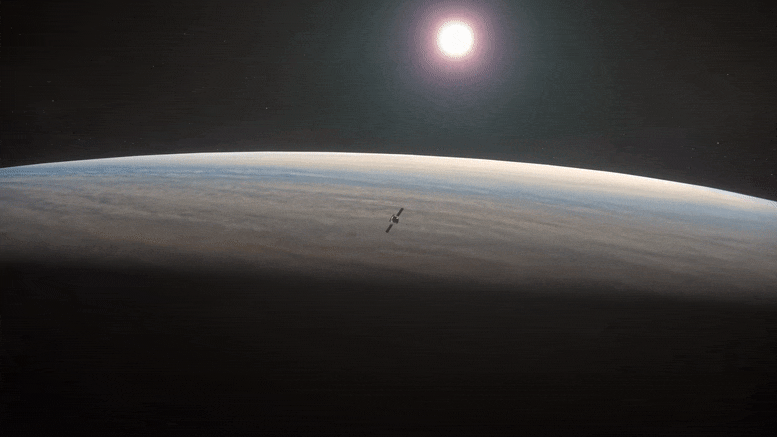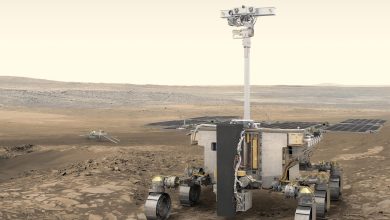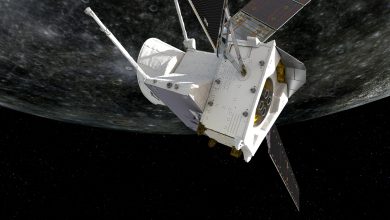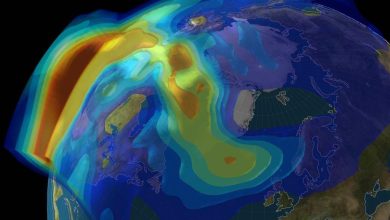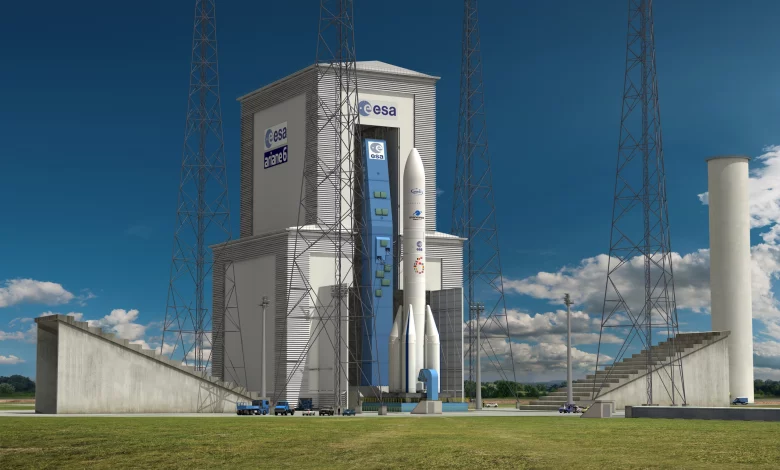
Lead image: Rendering of Ariane 64 on the launchpad – via ESA
ArianeGroup and the European Space Agency are carrying out preparations for the maiden launch of the Ariane 6 rocket next year. Ariane 6 represents the next generation of the Ariane family of rockets, intended to allow its customers lower-cost access to space. The rocket and launch pad still have an extensive test program ahead of them, with a current target launch date in the second half of 2022.
Ariane 6 is the sixth member of the Ariane family of rockets, whose development began in the 1970s to allow the ESA (European Space Agency) to place its own satellites–and commercial payloads–into geostationary orbit. From 1979 to 2003, the Ariane 1, 2, 3 and 4 rockets launched 144 times with 137 successes.
In 1996, the first Ariane 5 G rocket was launched. This introduced a new design using a cryogenic-fuel first stage, burning liquid hydrogen and liquid oxygen, a storable liquid-propellant second stage and two large SRBs (solid rocket boosters). By the time Ariane 4 was retired in 2003, Ariane 5 had taken over as the primary launch vehicle for ESA and Arianespace.
The Ariane 5 has launched 111 times to date, completing 106 missions successfully with two failures and three partial failures. Several variants of the rocket have been built, with the Ariane 5 ECA, first flown in 2002, introducing more powerful boosters, an upgraded first stage, and a completely new cryogenic upper stage.
Cryogenic propellants–also known as hydrolox–are more efficient and environmentally friendly than the hypergolic propellants used on the previous upper stage. As a result of its enhancements, the ECA variant significantly increased Ariane’s payload capacity.
While early issues with the Ariane 5 ECA were worked out, upgraded versions of the Ariane 5 G were brought into service–the G+ having a stretched version of the original upper stage, and the GS adding the more powerful boosters that had been developed for the ECA. A later version, Ariane 5 ES, would pair the upper stage of the GS with the lower stages of the ECA to deliver Automated Transfer Vehicles to the International Space Station and deploy clusters of Galileo navigation satellites.
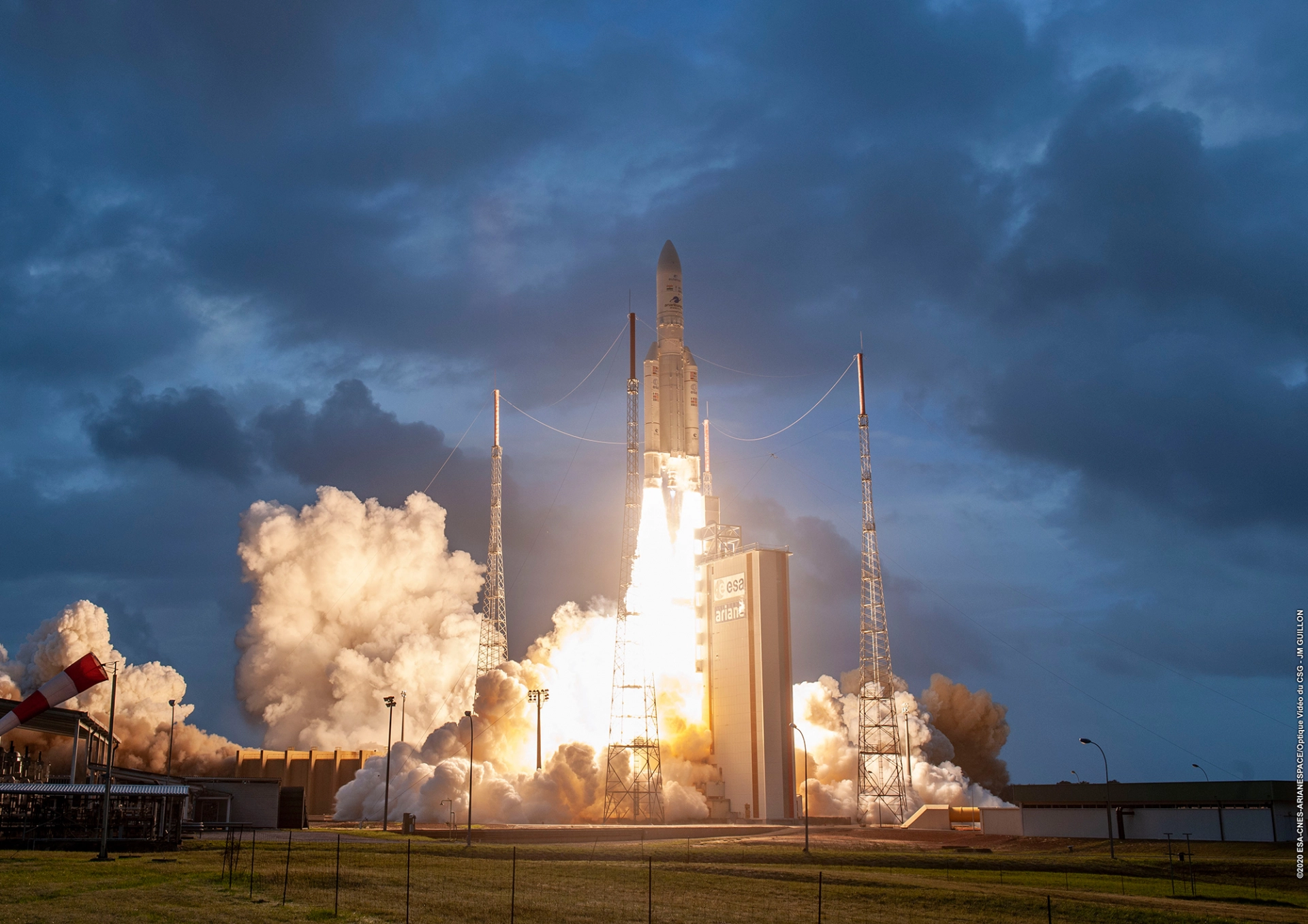
Today, all of the versions of Ariane 5 that used the storable propellant upper stage have been retired, leaving only the Ariane 5 ECA+ (an upgraded version of the ECA) in service. Ariane 5 is mostly used for launches to GTO (geostationary transfer orbit), often carrying two communications satellites at a time. It has also flown missions to low Earth orbit and other trajectories–such as the upcoming launch of the James Webb Space Telescope towards the Earth-Sun L2 Lagrange point.
In its ECA+ configuration, Ariane 5 has carried payloads of up to 11.2 tonnes to GTO, but it is not capable of placing satellites directly into geostationary orbit as its second stage’s HM-7B engine cannot be restarted in flight. As a result, it can make a single burn to reach the transfer orbit, but cannot fire again to circularize the orbit when it reaches apogee. At over 25 years old, the rocket is also becoming increasingly costly to operate.
The Ariane 6 program was started as a way to replace the Ariane 5 with a simpler, cheaper, and more flexible vehicle. Like its predecessor, Ariane 6 will use a large hydrolox core stage, with a second stage that also burns cryogenic propellant. During the early stages of flight, Ariane 6 will utilize two or four large P120C (P120 Common) solid rocket boosters. When flying with two booters, the rocket will be designated Ariane 62, while the version with four boosters will be called the Ariane 64.
The P120C motors are a brand-new set of SRBs made to replace the P80, currently used on Arianespace’s smaller Vega rocket. The P120C measures 13.5 meters long and 2.4 meters in diameter, using a carbon composite casing built by Italy’s Avio. At launch, the P120C will generate approximately 4,500 kN of thrust, making the motor the largest and most powerful single-segment solid rocket motor ever flown.

To complete its certification for flight, P120C completed three hot-fire tests at the Guiana Space Center in Kourou. In July 2018, the first hot-fire test was conducted with DM1 (development model No.1). The second hot-fire test was completed in January 2019 using QM1 (qualification model No.1).
A third and final test was conducted in October 2020 using QM2. The QM1 test used a booster configured as the first stage of the upcoming Vega-C rocket, while QM2 was tested in the configuration that will be used on the Ariane 6. With all three firings completed successfully, ESA certified the booster for use on both the Ariane 6 and Vega-C vehicles.
The first stage of the Ariane 6, known as the LLPM (Lower Liquid Propulsion Module), has a diameter of 5.4 meters–the same as the core stage of Ariane 5. It uses a single Vulcain 2.1 engine, derived from the Vulcain 2 engine used on the Ariane 5 ECA.
The Vulcain 2.1 will generate 1,371 kilonewtons of thrust to propel the Ariane 6 for the first eight to ten minutes of flight. The engine will be a gas-generator combustion cycle, similar to the Aerojet Rocketdyne RS-68A engine used on the US Delta IV rocket.
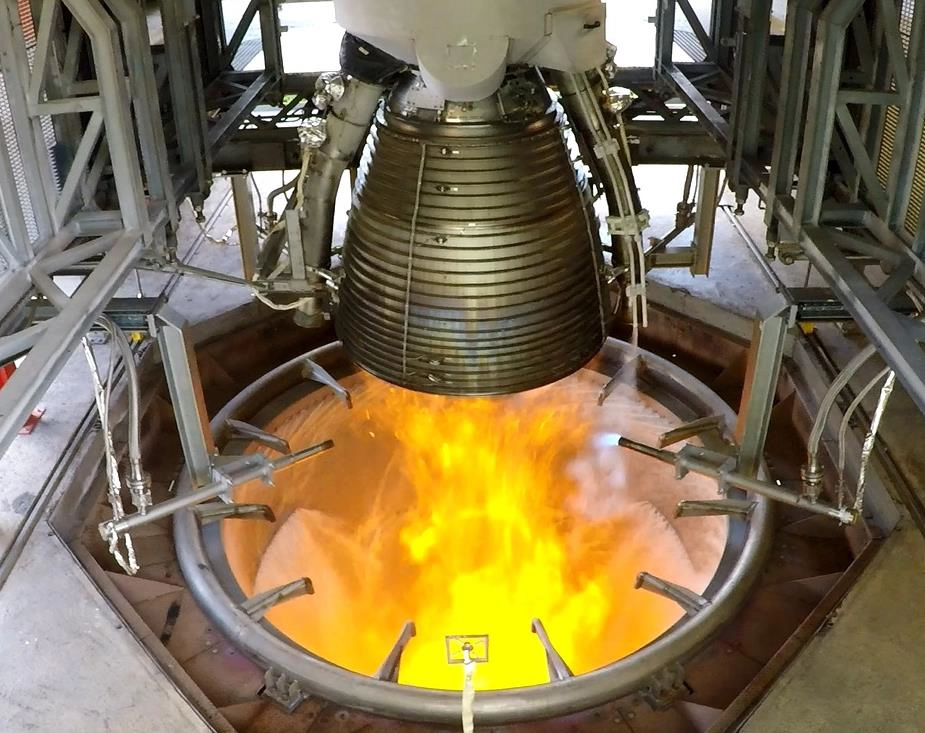
Vulcain 2.1 will use a 3D-printed gas generator with a redesigned and simplified nozzle. Its combustion chamber will be ignited from the ground via the bottom of the nozzle, instead of using pyrotechnic devices, which reduce the cost and weight of the engine. Heated oxygen from the exhaust lines will be used to pressurize the first stage propellant tanks instead of the rocket carrying liquid helium for this purpose as on Ariane 5.
These changes are expected to lower the cost of Vulcain 2.1 compared to Vulcain 2, without compromising the exceptional reliability that Vulcain 2 has achieved on the Ariane 5. The DLR (German Aerospace Center) undertook testing of the new engine beginning in January 2018, with final qualification achieved in July 2019. These tests fired Vulcain 2.1 for durations of up to 11 minutes to ensure that it would perform as expected throughout its flight.
Combined with the SRBs for the first minutes of the launch, the LLPM will carry the second stage to an altitude of around 200 kilometers and close to orbital velocity. From here, the second stage will separate to continue pushing its payload towards its target orbit or orbits.
The second stage, or ULPM (Upper Liquid Propulsion Module), uses the Vinci hydrolox engine. Vinci will generate 180 kilonewtons of thrust with a specific impulse of 457 seconds. The engine will use an extended nozzle to increase its performance and features an APU (Auxiliary Power Unit) to help pressurize and settle the propellant tanks, and to produce small amounts of thrust–for example, to help with the spacing of satellites that separate in clusters.
Unlike its predecessor, the HM-7B, Vinci will use an expander cycle where propellant is circulated to cool the combustion chamber and then drive the turbopump as it heats up and expands, before it is finally fed into the engine. Vinci will have the ability to reignite up to three times, allowing for on-orbit maneuvering and a deorbit burn at the end of the mission.
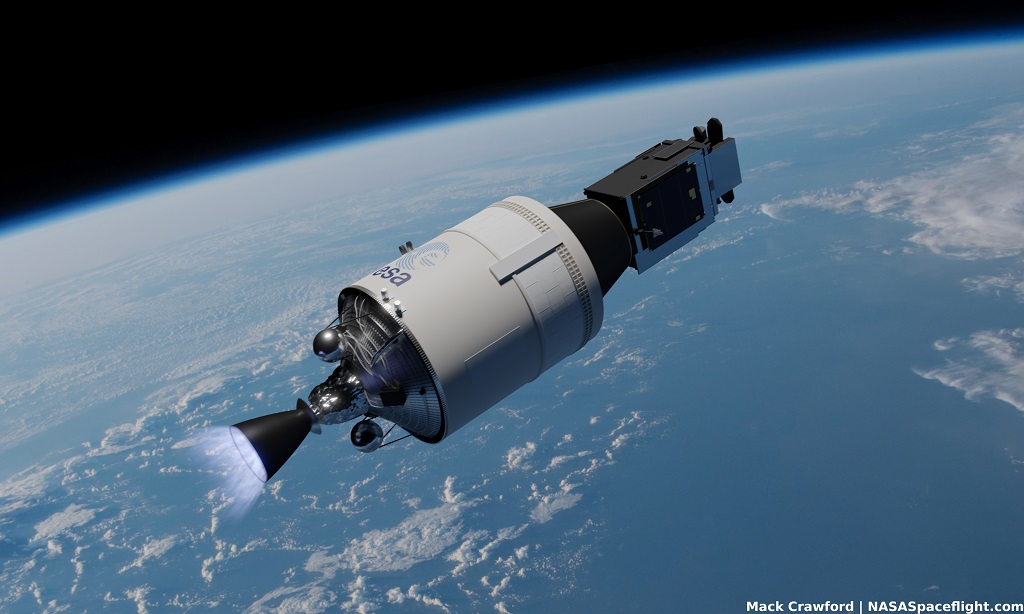
The Vinci engine has undergone a long and extensive test program. The first test started in May 2005 under the Ariane 5 Plus program, an ultimately abandoned plan for a mid-life upgrade of the Ariane 5. During the test program, the engine underwent 148 tests and was fired for a total of 52,156 seconds. The final qualification test took place in October 2018.
The second stage itself has started undergoing final ground testing in preparations for launch, including an umbilical separation test, ensuring that the connections between the rocket and its launch pad sever as expected when the vehicle lifts off.
The completed Ariane 6 rocket will be 5.4 meters in diameter and approximately 60 meters tall. A 5.4-meter diameter payload fairing will be mounted atop the second stage to protect the payload during the ascent through the atmosphere. This is a two-piece, or bisector, carbon-fiber composite structure made by Ruag Space.
Two different lengths of fairing will be used: both the Ariane 62 and 64 will be able to fly with a 20-meter long version, while a shorter a 14-meter fairing will also be available for the Ariane 62.
The first 20-meter long payload fairing was delivered to the Guiana Space Center in 2021. The two halves were lifted on top of a payload adaptor with a mock satellite to conduct a combined test. This test, which was completed in September, investigated how the fairings would handle the stresses of a launch.
Alongside the development of Ariane 6, a new launch complex is also under construction to support the rocket. ELA-4 (Ensemble de Lancement Ariane 4) will consist of three main structures in support of Ariane 6: an integration building, mobile gantry, and the launch pad itself.
The first stage and second stage will be integrated within the LVAB (Launch Vehicle Assembly Building), located about one kilometre away from the pad. The rocket will be assembled in a horizontal orientation, with the LVAB providing space for the preparations required before launch. The building will be 20 meters tall, 112 meters long, and 41 meters wide.
Once assembled, the rocket will be moved from the LVAB to the launch pad, where it will be enclosed in the mobile gantry.
Ariane 6 will sit upon a 700-tonne steel launch table, which will support the rocket and provide two main umbilical connectors to fuel the first stage. An umbilical tower will provide the rocket’s upper stage with fuel and electricity before launch. The tower will be connected to the second stage of Ariane 6 via two arms, which will separate at liftoff. Once the arms retract, large doors will close to protect the equipment from the exhaust as Ariane climbs past.
A flame trench under the launch pad will be used to divert the plumes created by the rocket at liftoff down two ducts, with a water deluge system activating shortly before launch to help dampen sound and vibrations. This was tested in April.
Four lightning protection masts around the launch pad will help to protect it in the event of thunderstorms.
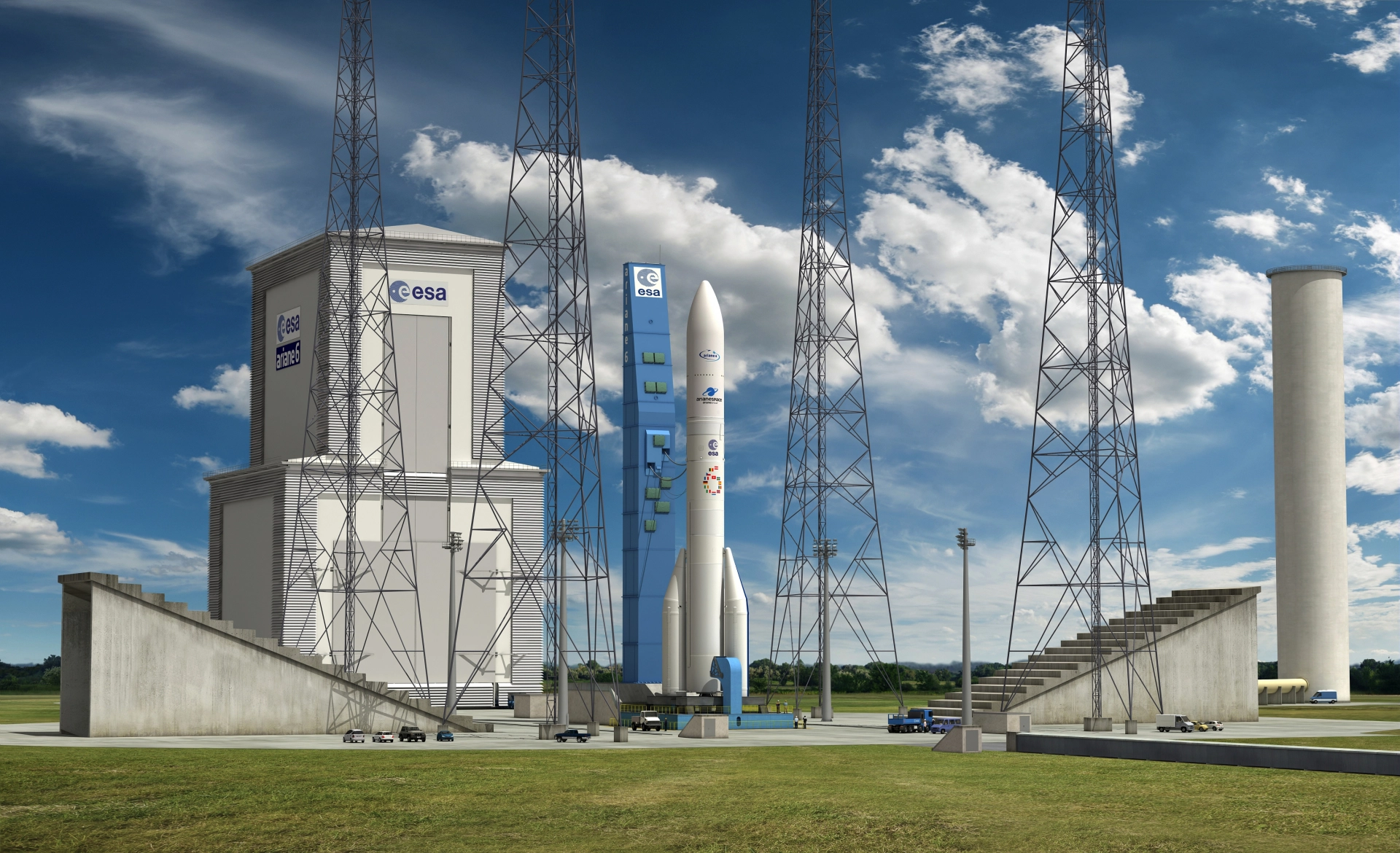
The pad’s mobile gantry will be used to support final assembly, testing, and preparations for launch, including integration of the payload with the Ariane 6 rocket. The gantry will also serve to protect the rocket and payload from the elements, and provide engineers with easy access to the rocket if a launch is delayed and inspections or minor repairs are required. The gantry is 90 meters tall with a metallic structure weighing over 8,200 tonnes.
The gantry can move between the launch pad and a parked position 140 meters away, which it will occupy when Ariane 6 is launched. It was first moved 97 meters in July 2019 while the pad was under construction, and testing has continued as construction of the pad and the gantry has proceeded.
With construction of the launch site now completed, testing has begun to ensure the complex works as a whole. This testing has included fit checks with mockups for the P120C motors, and in October 2020, a mockup of the Ariane 6 LLPM and two mockup P120Cs were stacked on top of the launch table for the first time.
For its maiden flight, Ariane 6 will fly in the Ariane 62 configuration, with a pair of solid rocket boosters. This configuration will be able to lift a payload of up to 10,300 kg to LEO (low Earth orbit), and up to 5,000 kg to GTO (geostationary transfer orbit), although for the maiden flight Ariane is not expected to carry a functional payload. The Ariane 64, with its four boosters, will be able to lift 21,600 kg to LEO, approximately 11,500 kg to GTO, and about 5,000 kg directly into GEO (geostationary orbit).
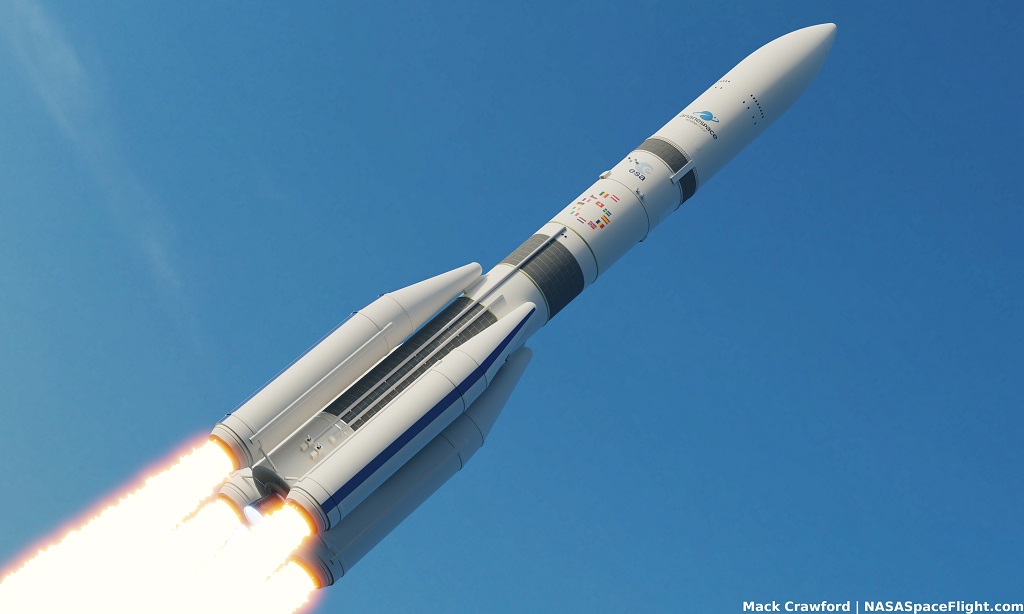
This large range of payload capabilities will allow Ariane 6 to place nearly any satellite into nearly any orbit. Like Ariane 5, the Ariane 6 will have the ability to carry two large satellites to GTO. However, with its new Vinci engine, Ariane 6 will be the first member of the Ariane family to be able to take a satellite directly to GEO.
Through Arianespace’s MSL (Multi-launch Service) program, Ariane 6 will also be able to provide for small satellites under 400 kg in mass to launch as secondary payloads in piggyback or rideshare missions. This is similar to the SSMS (Small Spacecraft Mission Service) that Arianespace already offers on its smaller Vega rocket, allowing the rideshare of multiple small satellites to anywhere in LEO. MLS will expand this offering to geostationary orbit and missions to the Moon and beyond.
In the future, Arianespace plans to offer a three-stage version of Ariane 6 with an optional kick stage called Astris. This will be used to interface directly with the payload and deliver it to its final orbit. The Astris can be used in place of built-in propulsion capabilities on some payloads–for example, by raising a satellite from geostationary transfer to geostationary orbit. The stage can also be used to provide an additional boost to payloads bound for destinations beyond Earth orbit, or to allow multiple payloads to be delivered into different orbits during an LEO mission.
The Astris stage will be powered by a Berta engine. Berta is a mid-size storable propellant engine that can be reignited several times. This kick stage can be used for an extended period of time. Astris is expected to make its first launch when an Ariane 64 deploys the European Space Agency’s Hera planetary defense demonstration mission in 2024.
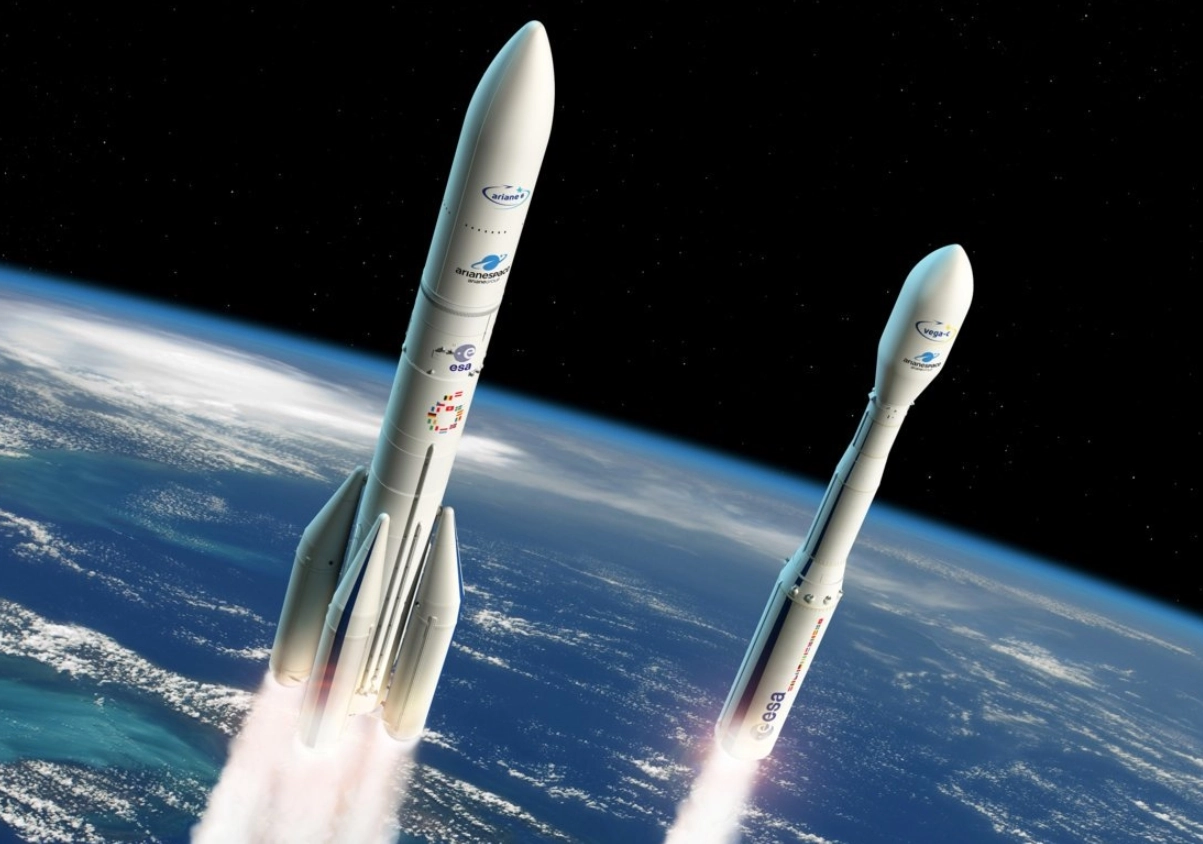
Ariane 6 is currently expected to make its debut in the second half of 2022. Also in 2022, ArianeGroup’s Vega-C rocket is expected to take its maiden flight with the LARES-2 (Laser Relativity Satellite 2) payload aboard. This rocket will use the same P120C solid rocket motor to be flown on Ariane 6 as its first stage and will replace the version of the Vega rocket that is currently in service.
Arianespace currently has six remaining Ariane 5 rockets to launch before it transitions fully to the Ariane 6. The new rocket already has several launches on its books, including the Hera mission and MLS rideshares. It has also been selected to launch one of the ViaSat-3 satellites, Intelsat’s Galaxy 37 spacecraft, and satellites for the Galileo navigation constellation.

